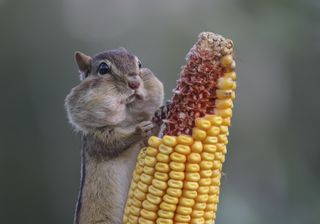
Headless penguins, face-planting elephants and owls that didn't quite stick the landing — these are just some of the images that made the finalist round for this year's Comedy Wildlife Photography Awards. The competition showcases some of the silliest antics of wild animals from all over the world.
As part of the competition, wildlife photographers were invited to submit their most hilarious animal photos. A panel of judges will choose the winning image that combines the most amusing content, the best technical expertise and the funniest caption. The judges have already chosen the 39 finalist photos, and the ultimate winner will be announced on Tuesday (Nov. 9). [See This Year's Finalists in the Comedy Wildlife Photography Awards]
Cute animal photos are basically why the Internet was created, right? And it turns out, there's science behind people's love of adorable animal snapshots. A 2012 study found that looking at that image of a bathtub overflowing with puppies or a smiley-faced kitten bounding through a field of daisies can actually boost work performance. And a 2013 study found that a painfully adorable photo can also induce a phenomenon called cute aggression — when someone says something is so incredibly cute it makes them want to "eat it up!"
In their hunt to pin down the science of cute, scientists have zeroed in on several features that tend to make animals extra adorable: big eyes, youthful appearance, small size, membership in the class Mammalia, fur, a smiling face and features that are found in domesticated animals — all of these tend to make people squee, researchers previously told Live Science.
From smiling frogs to baby elephants to furry, big-eyed baby monkeys, the goofy and adorable creatures that made the finalist list in the Comedy Wildlife Photograph Awards seem to have hit on at least a few of these traits.
People can view the full list of finalists, as well winners from past years, here.
Original article on Live Science.
Sign up for the Live Science daily newsletter now
Get the world’s most fascinating discoveries delivered straight to your inbox.

Tia is the managing editor and was previously a senior writer for Live Science. Her work has appeared in Scientific American, Wired.com and other outlets. She holds a master's degree in bioengineering from the University of Washington, a graduate certificate in science writing from UC Santa Cruz and a bachelor's degree in mechanical engineering from the University of Texas at Austin. Tia was part of a team at the Milwaukee Journal Sentinel that published the Empty Cradles series on preterm births, which won multiple awards, including the 2012 Casey Medal for Meritorious Journalism.
Most Popular




